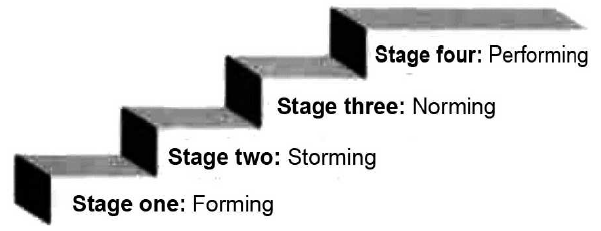Manag., December-2019 – Q3
0. The right sequence in respect of stages of group development is
- Option : A
- Explanation : Theories of group formation
Tuckman’s sequential theory: The way in which people come together in a group can be understood as involving stages. Tuckman (1965) analyzed around 50 studies on group development and concluded that groups generally go through a process of development that can be identified as four stages: Forming, Storming, Norming, and Performing. In 1977 Tuckman and Jensen identified a the fifth stage of Adjourning in order to describe the process of ending a group.
Tuckman’s stage (sequence) theory is one of the best known and most quoted theories. Johnson and Johnson (1997) state, ‘Of all the sequential stage theories Tuckman’s emphasis on forming, storming, norming, performing, and adjourning still seems the most useful and creates the most interest.’
Fig. Tuckman’s four stages of group formation An outline explanation of group development is given in Figure.
Stage 1: Forming: When people first get together there is likely to be an introductory stage. People may be unsure about why they are attending a meeting. The purpose of the group may not be clear. People may have little commitment to the group and there may be no clear value system. Stereotyping and prejudice may be expressed.
Stage 2: Storming: There may be ‘power struggles’ within the group. Different individuals may contest each other for leadership of the group. There may be arguments about how the group should work, who should do tasks, and so on. Groups can fail at this stage and individuals can decide to drop out because they do not feel comfortable with other people in the group. Teams might split into sub-groups who refuse to communicate with each other if they become stuck in the storming stage.
Stage 3–Norming: At this stage group members develop a set of common beliefs and values. People are likely to begin to trust each other and develop clear roles. Norms are shared expectations which group members have of each other. Norms enable people to work together as a group.
Stage 4–Performing: Because people share the same values and norms the group can perform tasks effectively. People may feel that they are comfortable and belong in the group. There may be a sense of high morale.
Stage 5–Adjourning: The group has to conclude de their activities and find an acceptable way for group members to part. The group has to complete and end the existence of the group’s identity.


